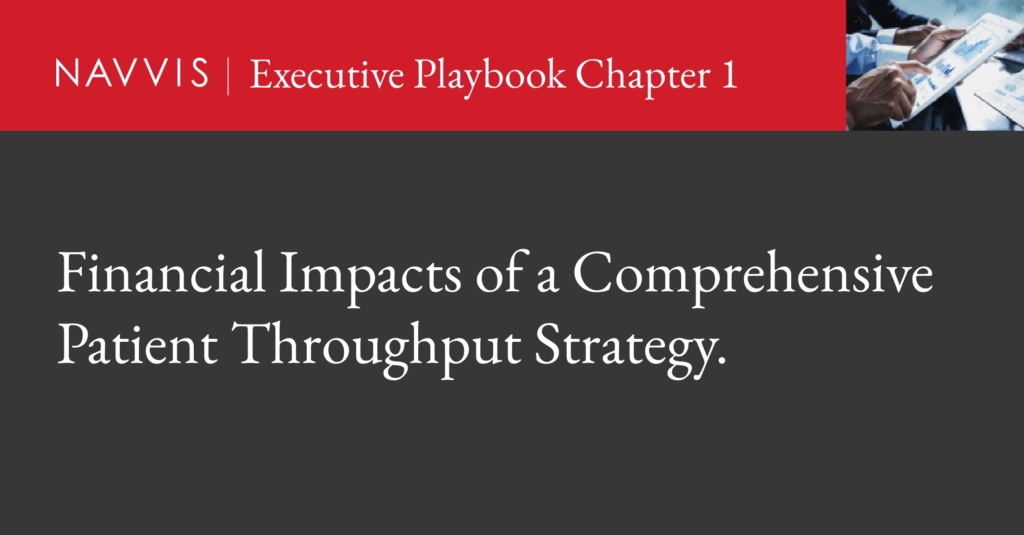
Audio transcription is below.
Welcome to the Navvis Executive Playbook Chapter 1: The Financial Impacts of a Comprehensive Patient Throughput Strategy, where we’ll explore the significant financial benefits of implementing a comprehensive patient throughput strategy. With rising healthcare costs and increasing pressure to improve patient outcomes, health systems are seeking effective ways to optimize their operations. A well-designed patient throughput strategy can dramatically reduce the length of stay, decrease re-admission rates, streamline emergency department utilization, and allocate resources more efficiently. This enhances the patient experience and leads to substantial cost savings, potentially saving tens of millions of dollars annually.
Now, let’s dive into the key elements of a comprehensive patient throughput strategy and explore how each component contributes to improved patient outcomes and substantial financial savings.
Reduced Length of Stay
Hospitals can achieve savings up to tens of millions of dollars by reducing penalties and freeing resources. Reducing length of stay and avoidable days, not only frees up hospital beds for other patients but also lowers the overall cost of care per patient. Some studies have shown that even a modest reduction in average length of stay can lead to up to tens of millions of dollars in annual cost savings for an average hospital.

Learn more about our About Our
Patient Throughput and Capacity Solutions
Decreased Readmissions
Effective discharge planning, follow-up care, and community linkages are crucial components of patient throughput strategies. By ensuring that patients receive appropriate care after discharge, hospitals can reduce the likelihood of re-admissions, which are costly and often penalized under value-based care models.
Efficient and Appropriate Use of Emergency Department Services
By streamlining patient flow from the emergency department via timely discharge to home or post-acute care settings reduces overcrowding and the need for costly emergency interventions. Additionally, ensuring emergency departments are caring for the right patients is crucial to a successful patient throughput strategy.
Optimal Resource Allocation
By ensuring clinicians practice top-of-license at each step along the continuum leads to the deployment of the right resource, at the right time, in the right place. Technology, process, and equipment optimization aid in achieving operational efficiency as well.
Improved Patient Outcomes And Experience
When implementing effective patient throughput, it ensures that patients receive timely, appropriate care, which often leads to better health outcomes. Providing the right care, at the right place, at the right time in a patient journey, with the right resources, also leads to a more positive patient experience.
Increase in Early Interventions
By managing patient care proactively, organizations can prevent the progression of disease. Hospitals and health systems can also promote support service integration, at diagnosis or soon after, and reduce reliance on unnecessary acute-care utilization and high-cost services such as intensive care.
In summary, a comprehensive patient throughput strategy is more than just a set of operational improvements. It is a vital approach that intertwines financial health with patient well-being. By reducing unnecessary hospital stays, preventing re-admissions, optimizing emergency department usage, and ensuring timely and appropriate care, healthcare organizations can achieve significant cost savings while enhancing the quality of care delivered.
The ripple effect of these changes extends beyond immediate financial gains, contributing to better health outcomes and a more sustainable healthcare system. As we move forward, embracing these strategies will be key to navigating the challenges of modern healthcare. Thank you for listening. We hope we have provided valuable insights into the financial impacts of patient throughput optimization.
Contact us today to learn how we can support your organization in achieving better patient outcomes and financial success.
Ready to get started with a patient throughput strategy?



